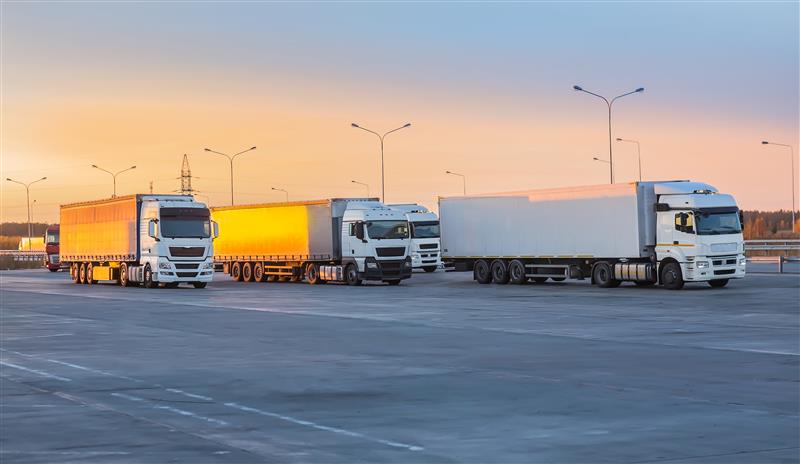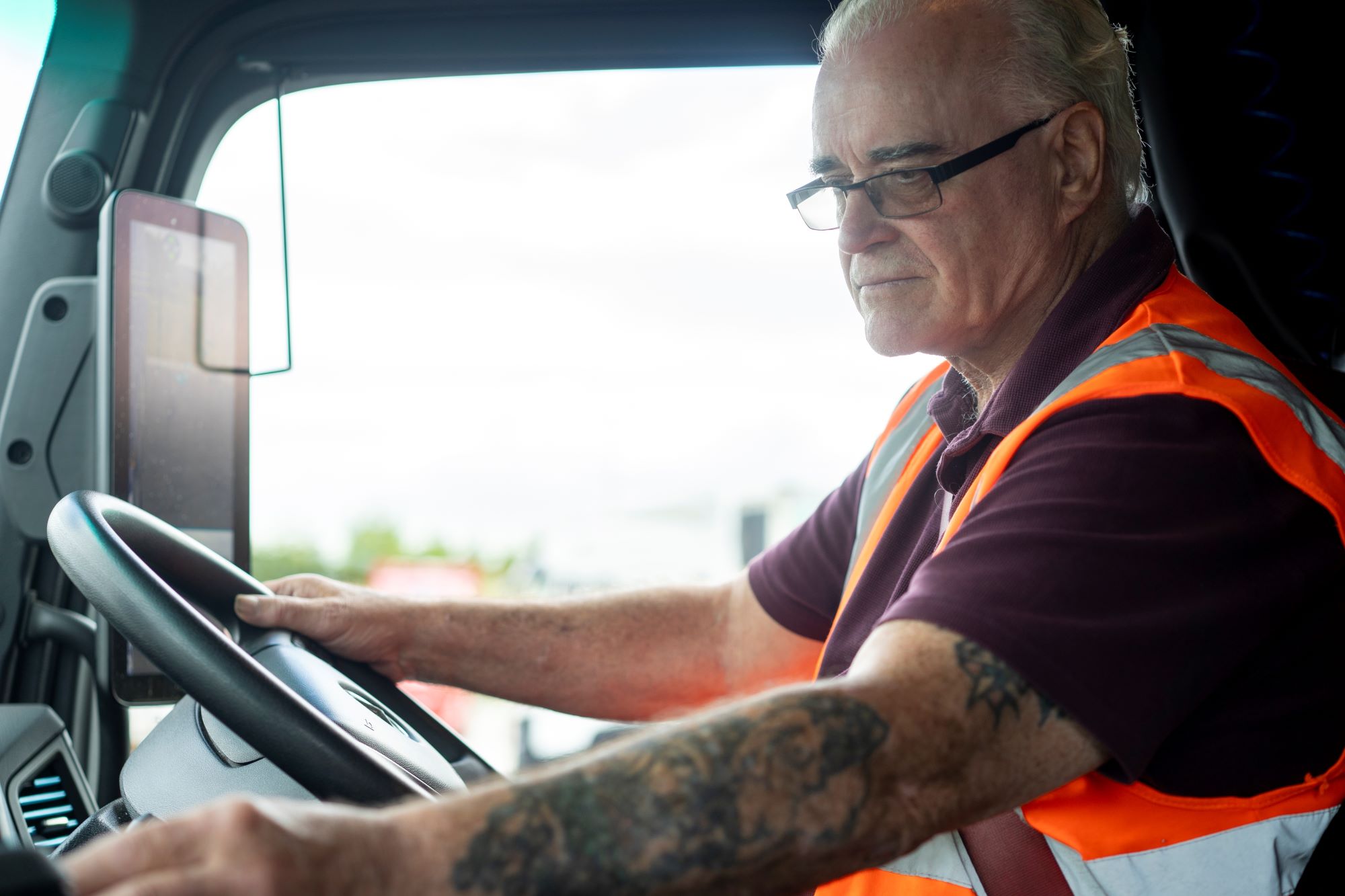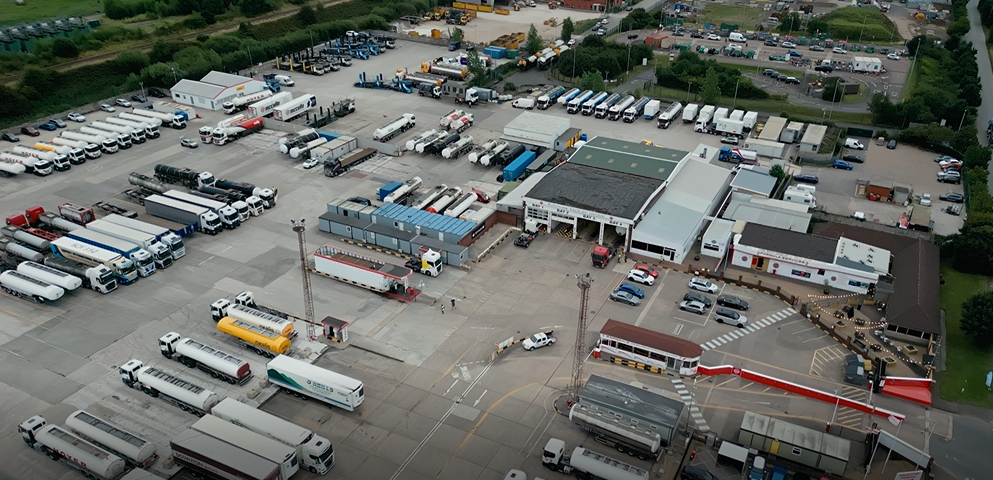
Guest
Mohou nákladní automobily v Evropě jezdit i v neděli?
Vytvořeno: 23.12.2024
•
Aktualizováno: 23.12.2024
Orientace v nedělních zákazech řízení nákladních vozidel v Evropě vyžaduje komplexní znalost předpisů jednotlivých zemí, sezónních rozdílů a účinných strategií. Investováním do důkladného plánování tras, informovaností, optimalizací provozu a využitím technologií mohou vozové parky zmírnit dopad těchto omezení.
V tomto blogu se zabýváme různými pravidly v různých evropských zemích a dále se věnujeme nejlepším způsobům, jak se jim přizpůsobit.
Předpisy specifické pro danou zemi
Každá země má své vlastní zákony týkající se zákazu nedělní jízdy, které se mohou značně lišit.
Německo
Od 12:00 do 22:00 hodin posledního dne v týdnu není povolen provoz nákladních vozidel, jejichž hmotnost přesahuje 7,5 tuny. To však nemusí být nutně odstrašující. Provoz kombinované dopravy může využívat zvláštní úlevy, přičemž železniční a silniční doprava je povolena do vzdálenosti 200 kilometrů od nakládacích nebo vykládacích stanic a přístavní nebo silniční doprava je povolena do vzdálenosti 150 kilometrů od přístavů. Osvobozena je také přeprava specifického zboží podléhajícího rychlé zkáze, jako je čerstvé mléko, mléčné výrobky, maso, ryby, ovoce a zelenina.
Kromě toho se zákaz nevztahuje na některá vozidla a činnosti, například na vozidla záchranné služby, která se podílejí na vyprošťování, odtahu nebo havarijní službě.
Francie
Na tomto území platí podobná omezení jako v Německu pro nákladní vozidla nad 7,5 tuny. Tato embarga platí o nedělích a státních svátcích od 12 do 22 hodin.
Kromě toho platí omezení v sobotu a den před státním svátkem, kdy je jízda zakázána od 22:00 do 24:00. A v létě platí o určitých sobotách zákazy od 7 do 19 hodin.
Výjimky se vztahují na určité zboží, včetně mléčných a masných výrobků, a na vozidla záchranné služby. Porušení těchto zákazů může vést ke značným pokutám v rozmezí od 750 do 3 750 eur pro jednotlivce i společnosti.
Itálie
V Itálii nesmějí nákladní vozidla vyjíždět na silnice v neděli a ve státní svátky od 9 do 22 hodin. Za zmínku stojí, že v červnu, červenci, srpnu a září začíná embargo dříve, v 7 hodin ráno - i když stále končí ve 22 hodin.
V letních měsících jsou v zemi zavedena další omezení. V červenci platí sobotní embargo od 8 do 16 hodin a v srpnu se prodlužuje od 8 do 22 hodin.
I když se jedná o obecná pravidla, je důležité vědět, že na některých trasách mohou existovat místní odchylky nebo dočasná omezení. Stejně jako ve Francii a Německu mohou platit také některé výjimky pro specifické druhy zboží nebo pohotovostní služby.
Španělsko
Co se týče Španělska, zde je scénář mnohem složitější. Existuje zde směsice regionálních zákazů, zejména v Katalánsku. Omezení pro jízdu nákladních vozidel se mohou měnit v závislosti na místních předpisech, státních svátcích a konkrétních trasách. Řidiči kamionů, kteří zde působí, by se měli seznámit s místními pokyny, aby zajistili jejich dodržování.
Kromě nedělí a svátků platí v letních měsících také omezení o některých sobotách. Tato opatření platí zpravidla od 8:00 do 12:00, zejména v červenci a srpnu, kdy je provoz kvůli rekreantům intenzivnější.
Ostatní země
Pokud jde o ostatní evropské země, existuje mnoho zemí, které rovněž uplatňují vlastní zákaz nedělní jízdy. Například Rakousko nařizuje, že nákladní vozidla s hmotností nad 7,5 tuny nesmí v neděli od 12 do 22 hodin na silnice. Něco podobného zachovává i Švýcarsko, kde vozidla nad 3,5 tuny nemohou jezdit po celý den.

Strategie pro flotilové společnosti
Pro zvládnutí nedělních omezení jízdy nákladních vozidel je zásadní efektivní plánování trasy. Pomocí pokročilých technologií a strategického myšlení mohou provozovatelé vozových parků své procesy optimalizovat.
Využívejte GPS a software pro plánování tras
Využití moderních systémů GPS a softwaru pro plánování tras umožňuje vozovým parkům a jejich řidičům určit nejefektivnější cesty a zároveň se vyhnout oblastem se zákazem jízdy. Tyto nástroje mohou poskytovat aktuální informace o stavu silnic v reálném čase a zajistit, aby řidiči nákladních vozidel mohli činit informovaná rozhodnutí za jízdy.
Zvažte alternativní trasy
Dalším nápadem je prozkoumat různé způsoby, jak se na dané místo dostat. I když může být lákavé držet se nejpřímější cesty, alternativní trasy mohou často ušetřit čas a vyhnout se případným pokutám. Takové objížďky mohou být o něco delší, ale mohou pomoci obejít oblasti s přísnými embargy, což umožní hladší provoz.
Plán pro případ zpoždění
Vzhledem k možnosti komplikací způsobených dopravními zácpami nebo omezeními v dopravě je pro společnosti provozující vozový park také rozumné, aby si do svých plánů zapracovaly dodatečný čas. Proaktivní přístup poskytuje lepší příležitost, aby dodávky zůstaly včasné - a to i v případě neočekávaných problémů.
Informujte se
Stejně důležité je mít přehled o předpisech a dopravních podmínkách v reálném čase. Proto je rozumné používat speciální aplikace a webové stránky - ty poskytují řidičům kamionů aktuální informace o uzavírkách, nehodách a dopravních zácpách, což jim umožňuje upravit trasy a vyhnout se případným zpožděním.
Mnoho dopravních sdružení a poskytovatelů logistických služeb nabízí předplatné dopravních upozornění. Přihlášením k odběru těchto upozornění mohou provozovatelé vozových parků dostávat informace o případných změnách pravidel silničního provozu a zajistit tak jejich dodržování.
Využití technologie
Využití technologie může zvýšit provozní efektivitu a dodržování předpisů o době řízení.
Telematické systémy umožňují fleetovým společnostem sledovat polohu vozidel, spotřebu paliva a chování řidičů. Tyto údaje mohou být neocenitelné pro optimalizaci tras. Vedení digitálních knih jízd navíc zjednodušuje vedení záznamů, což poskytne nezbytnou dokumentaci v případě auditu.
Neméně důležitá je technologie pro zjednodušení plateb - a právě v tom může SNAP pomoci.
Zaregistrujte se do systému SNAP
Ať už hledáte bezpečné parkování, mytí nákladních vozidel nebo jiné služby pro svůj vozový park, naše řešení vám umožní platit za ně mnohem pohodlněji. Podívejte se, co vám SNAP může nabídnout ještě dnes.



